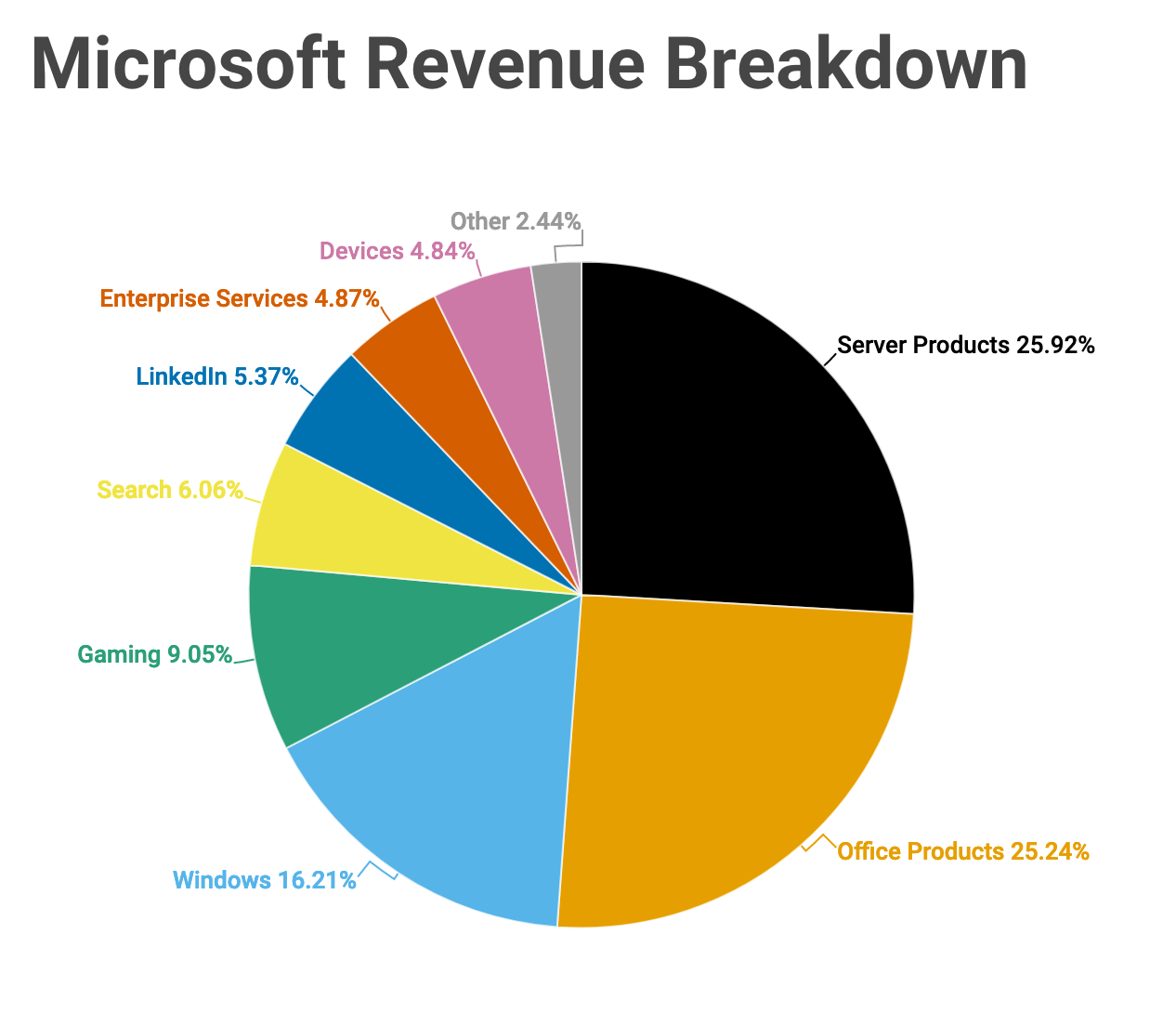El último quinquenio de Microsoft se recordará como uno de los mayores turnaround de las big caps americanas. Aquí los resultados
REDMOND, Wash. — April 29, 2020 — Microsoft Corp. today announced the following results for the quarter ended March 31, 2020, as compared to the corresponding period of last fiscal year:
· Revenue was $35.0 billion and increased 15%
· Operating income was $13.0 billion and increased 25%
· Net income was $10.8 billion and increased 22%
· Diluted earnings per share was $1.40 and increased 23%
“We’ve seen two years’ worth of digital transformation in two months. From remote teamwork and learning, to sales and customer service, to critical cloud infrastructure and security – we are working alongside customers every day to help them adapt and stay open for business in a world of remote everything,” said Satya Nadella, chief executive officer of Microsoft. “Our durable business model, diversified portfolio, and differentiated technology stack position us well for what’s ahead.”
“In this dynamic environment, our sales teams and partners executed a solid third quarter, with Commercial Cloud revenue generating $13.3 billion, up 39% year over year," said Amy Hood, executive vice president and chief financial officer of Microsoft. “We remain committed to balancing operational discipline with continued investments in key strategic areas to drive future growth.”
COVID-19 Impact
In the third quarter of fiscal year 2020, COVID-19 had minimal net impact on the total company revenue.
In the Productivity and Business Processes and Intelligent Cloud segments, cloud usage increased, particularly in Microsoft 365 including Teams, Azure, Windows Virtual Desktop, advanced security solutions, and Power Platform, as customers shifted to work and learn from home. In the final weeks of the quarter, there was a slowdown in transactional licensing, particularly in small and medium businesses, and a reduction in advertising spend in LinkedIn.
In the More Personal Computing segment, Windows OEM and Surface benefited from increased demand to support remote work and learn scenarios, offset in part by supply chain constraints in China that improved late in the quarter. Gaming benefited from increased engagement following stay-at-home guidelines. Search was negatively impacted by reductions in advertising spend, particularly in the industries most impacted by COVID-19. The effects of COVID-19 may not be fully reflected in the financial results until future periods.
Segment Highlights
Revenue in Productivity and Business Processes was $11.7 billion and increased 15% (up 16% in constant currency), with the following business highlights:
· Office Commercial products and cloud services revenue increased 13% (up 15% in constant currency) driven by Office 365 Commercial revenue growth of 25% (up 27% in constant currency)
· Office Consumer products and cloud services revenue increased 15% (up 17% in constant currency) with continued growth in Office 365 Consumer subscribers to 39.6 million
· LinkedIn revenue increased 21% (up 22% in constant currency)
· Dynamics products and cloud services revenue increased 17% (up 20% in constant currency) driven by Dynamics 365 revenue growth of 47% (up 49% in constant currency)
Revenue in Intelligent Cloud was $12.3 billion and increased 27% (up 29% in constant currency), with the following business highlights:
· Server products and cloud services revenue increased 30% (up 32% in constant currency) driven by Azure revenue growth of 59% (up 61% in constant currency)
· Enterprise Services revenue increased 6% (up 7% in constant currency)
Revenue in More Personal Computing was $11.0 billion and increased 3% (up 4% in constant currency), with the following business highlights:
· Windows OEM revenue was relatively unchanged year over year
· Windows Commercial products and cloud services revenue increased 17% (up 18% in constant currency)
· Search advertising revenue excluding traffic acquisition costs increased 1%
· Xbox content and services revenue increased 2%
· Surface revenue increased 1% (up 2% in constant currency)
Return to Shareholders
Microsoft returned $9.9 billion to shareholders in the form of share repurchases and dividends in the third quarter of fiscal year 2020, an increase of 33% compared to the third quarter of fiscal year 2019.
Business Outlook
Microsoft will provide forward-looking guidance in connection with this quarterly earnings announcement on its earnings conference call and webcast.
Responding to COVID-19
At Microsoft, our focus remains on ensuring the safety of our employees, striving to protect the health and well-being of the communities in which we operate, and providing technology and resources to our customers and partners to help them do their best work while remote. Additional information about Microsoft’s COVID-19 response can be found
here.
Quarterly Product Releases and Enhancements
Every quarter Microsoft delivers hundreds of products, either as new releases, services, or enhancements to current products and services. These releases are a result of significant research and development investments, made over multiple years, designed to help customers be more productive and secure and to deliver differentiated value across the cloud and the edge.
Here are the
major product releases and other highlights for the quarter, organized by product categories, to help illustrate how we are accelerating innovation across our businesses while expanding our market opportunities.
Environmental, Social, and Governance (ESG)
To better execute on Microsoft’s mission, we focus our Environmental, Social, and Governance (ESG) efforts where we can have the most positive impact. To learn more about our latest initiatives and priorities, please visit our investor relations
ESG website.
Webcast Details
Satya Nadella, chief executive officer, Amy Hood, executive vice president and chief financial officer, Frank Brod, chief accounting officer, Keith Dolliver, deputy general counsel, and Michael Spencer, general manager of investor relations, will host a conference call and webcast at 2:30 p.m. Pacific time (5:30 p.m. Eastern time) today to discuss details of the company’s performance for the quarter and certain forward-looking information. The session may be accessed at
http://www.microsoft.com/en-us/investor. The webcast will be available for replay through the close of business on April 29, 2021.
Constant Currency
Microsoft presents constant currency information to provide a framework for assessing how our underlying businesses performed excluding the effect of foreign currency rate fluctuations. To present this information, current and comparative prior period results for entities reporting in currencies other than United States dollars are converted into United States dollars using the average exchange rates from the comparative period rather than the actual exchange rates in effect during the respective periods. All growth comparisons relate to the corresponding period in the last fiscal year. Microsoft has provided this non-GAAP financial information to aid investors in better understanding our performance. The non-GAAP financial measures presented in this release should not be considered as a substitute for, or superior to, the measures of financial performance prepared in accordance with generally accepted accounting principles (GAAP).













